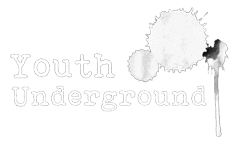THE PALERMO PROTOCOL
—
In December 2000, the international community took the bold step of putting together the UN Protocol to Prevent, Suppress and Punish Trafficking in Persons, especially Women and Children, supplementing the United Nations Convention against Transnational Organized Crime (the “Palermo Protocol”). It provided a powerful legal tool that has generated the adoption of legislation and institutional frameworks at international and national levels. Despite all these efforts, human trafficking remains a tragic reality with wide-ranging social, economic and legal implications that affect all segments of society.
The Palermo Protocol defines human trafficking as:
[…] the recruitment, transportation, transfer, harbouring or receipt of persons, by means of the threat or use of force or other forms of coercion, of abduction, of fraud, of deception, of the abuse of power or of a position of vulnerability or of the giving or receiving of payments or benefits to achieve the consent of a person having control over another person, for the purpose of exploitation. Exploitation shall include, at a minimum, the exploitation of the prostitution of others or other forms of sexual exploitation, forced labour or services, slavery or practices similar to slavery, servitude or the removal of organs.
This definition is structured around three major elements:
- ACT: Human trafficking involves the recruitment, transportation, transfer, harboring and/or receipt of a person.
- MEANS: It can be the threat or use of force, deception, abduction, the abuse of power or a position of vulnerability, or other forms of coercion.
- PURPOSE: The purpose of human trafficking is exploitation, which can include the forced prostitution of others, forced labor, slavery or servitude.
While we use this definition as the basis of our work, we look at trafficking in a broader context – acknowledging that trafficking can happen on a small scale without organized criminal involvement and that children, women and men can be trafficked within as well as between countries.
According to the United Nations, approximately 2.5 million people are trafficked every year. They are recruited or transferred through some form of coercion or deception and exploited, mainly for forced labor or sexual exploitation. Women and children are the primary targets, but men are also trafficked. Each country is affected either as a source, transit or destination or a combination of all three.
Human trafficking is a human rights violation at every stage of the trafficking process. The lack of understanding, and often the denial of the scope and nature of the crime, still continues today. There is a lot of ignorance about what human trafficking is and about the fact that it happens in plain sight – everywhere, whatever the gender or social status of the victims. But there is no doubt that human trafficking is a crime against the dignity and integrity of a person. It may include deprivation of liberty, cruel and degrading treatment, physical and psychological violence, theft of documents and property, sexual abuse, labor violations, deprivation of access to medical care and education, among others offences. This modern form of slavery is a covert activity involving hidden populations and manifests itself in various forms, in all countries worldwide.
Because it is the first international instrument to define trafficking, and it does so comprehensively. The success of achieving consensus on a definition cannot be understated. The Protocol reflects the first international consensus on the definition of trafficking, which is the first step toward a concerted international effort to combat trafficking. Beyond the definition, the true force of the document lies in the law enforcement provisions.
- Article 5 obligates State Parties to criminalize trafficking, attempted trafficking, participating as an accomplice, and organizing and directing trafficking.
- In addition, Article 10 requires law enforcement training to help identify potential trafficking victims and organized crime methods used to traffic individuals. Article 10 also requires an information exchange among law enforcement and immigration officials of State Parties regarding transportation routes, fraudulent documents, and potential traffickers.
- Articles 11 and 12 mandate strengthened border control measures, such as checking travel documents, boarding vehicles for inspection, and increasing the quality of travel documents to reduce fraud. The mandatory provisions regarding victims are an additional advantage of the Protocol.
- For example, Article 9 addresses mandatory prevention measures, specifically citing mass media information campaigns, close cooperation with NGOs, and the creation of social and economic incentives. Examples of such incentives include microcredit lending programs, social advancement of women, job training, or tax incentives to start small businesses. Such incentives are measures that help alleviate the economic and social pressures that can make people vulnerable to traffickers.
- Under Article 6, State Parties also are required to include provisions within their domestic legal frameworks regarding victim compensation and information on legal proceedings. Moreover, legal proceedings must be kept confidential.
- Article 8 requires State Parties to facilitate the repatriation of citizens or nationals with due regard for the safety of the victim by providing necessary travel documentation and a return without unreasonable delay.



